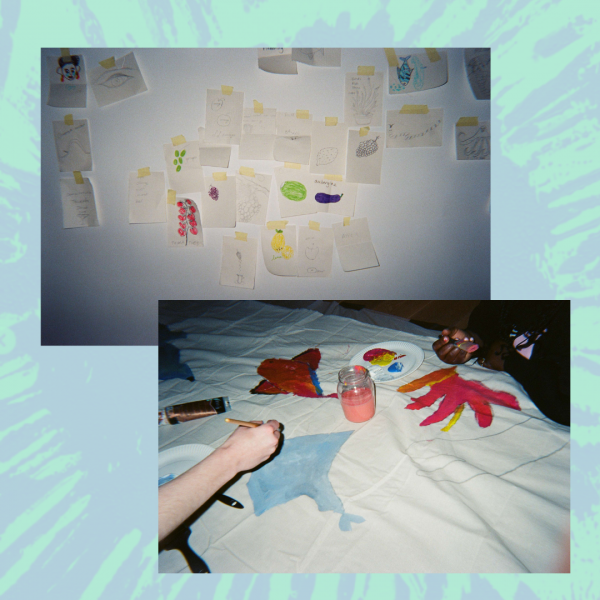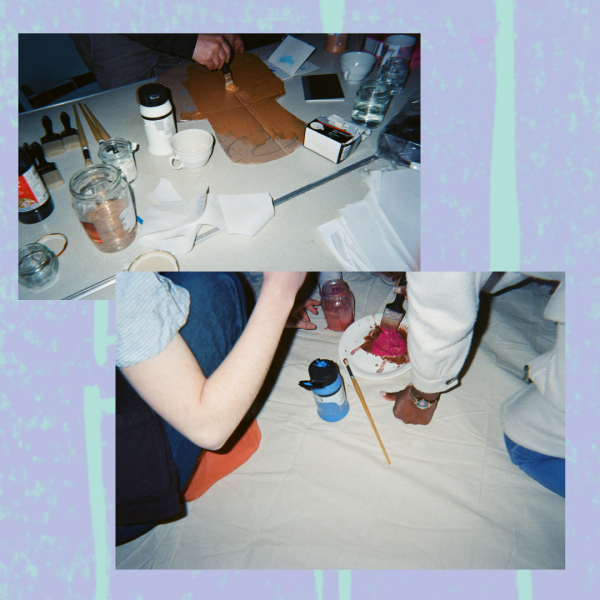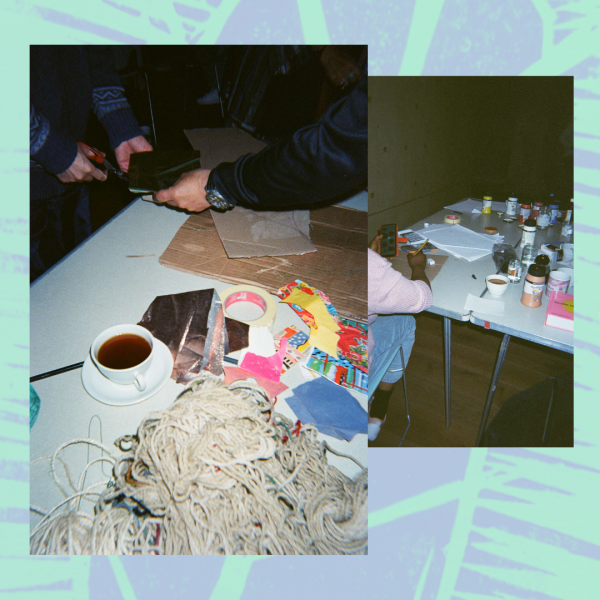
Raging Sea is an exhibition – held in person in July and now available online – that celebrates art, poetry and storytelling by people with lived experience of migration. It features prints, poetry, zines, performance work, textiles and sound created in projects organised in collaboration with Hackney Migrant Centre and featuring a number of guest facilitators. The full exhibition is available online here.
Over the past year, the ‘Pathologies of Solitude’ project held a series of workshops, setting out to explore the connections between migration and solitude. These included creative writing and poetry with Rachel Long and Olumide Popoola; print making with Dima Karout; zine making with Migrants in Culture at Rabbits Road Press; storytelling with Stories in Transit, featuring Wafa’ Tarnowska, Debsey Wykes and Sophie Herxheimer.
During winter months, we huddled in coats, seated in a circle in the draughty Old Church. As the circle gradually grew, so too did the themes and questions we explored in our sessions. We shared stories of home, belonging, family, difficult journeys and moments of connection. Through free writing exercises, we explored resonant images, smells, places, people. Each workshop ended with music and a shared Caribbean meal cooked by Colga Parker and her family run catering business, known to many in Hackney from their Saturday market stall. The fabric used in the exhibition was purchased from Stoke Newington’s ‘Ultimate Craft’, staffed by women from Azad Kashmir.

The exhibition also includes work by ‘Singing Blankets’, a collaborative art project with refugees and asylum seekers situated around the notion of individual and collective action and creation through sewing and sound exploration. The project primarily takes the form of workshops, where all participants receive materials for making individual blankets; a platform for telling their story through the making of an individual artwork. During the workshops they engage in collective music creation; combining vocal improvisation and sonic meditation as tools for empowerment and for the emancipatory effects that singing together as a group can have. Any kind of sound making is actively encouraged, including spoken word, abstraction of sounds, recordings, the use of found objects and improvised instruments.
The title of the exhibition, ‘Raging Sea’, is taken from a line written by a participant, Lilian, during a zine-making workshop. She writes:
RAGING SEA
ANGER ANGER ANGER
SEA BURSTING ITS
BOUNDARY WEEPING
WORLD POLLUTION
These lines speak to the entanglements of feeling and place, the emotional connections we make to our environments. They remind us, too, of the treacherous journeys many make before they arrive. At a time when Britain is pursuing a frenzied anti-migrant politics, ‘Raging Sea’ urges us to challenge the insular identifications, the fantasies of national and racial belonging that sustain this project of injustice and violence. So much of the rhetoric of British nationalism is tied to the idea of being a solitary island nation, and imperial attempts to master and control the sea. This exhibition insists on the ways in which seas connect us – to ties of history, geography and indeed emotion.
We hope, through this exhibition, to avoid homogenising notions of ‘migrant experience’. There are different, particular voices in this show even as there are shared conditions, experiences, and indeed, collective organising. This year marks ten years of the ‘Hostile Environment’. There are many ways in which these insidious and explicit policies seek to produce loneliness and isolation, in part by sustaining a state of uncertainty and disenfranchisement. And yet the experiences of solitude that the works in this exhibition touch upon are particular, and deserve to be read in their specificity. We invite you to reflect on your own experiences as you make your way through the exhibition.
